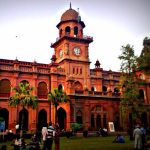Geological experts are making steady progress in mapping toposheets of the outcrop area of Balochistan to maintain data for the exploration of metallic and non-metallic minerals, dimension stones, aggregates and limestone reserves in the province.
Under the project, for which the government has allocated Rs 30 million in the Public Sector Development Programme 2021-22, the geological mapping of 50 toposheets out of 354 unmapped toposheets of the outcrop area of Balochistan would be carried out.
As per the project updates, the experts successfully performed the initial study of maps, toposheets, aerial photography and satellite imagery.
“Unmapped areas including parts of Chagai, Khuzdar and Lasbela Districts have been selected for detailed mapping based on mineral potential and geological complexity,” according to an official report available with APP.
Also Read: SUPARCO joins hands with Turkish Aerospace Industries to develop satellite projects
Previous literature and maps were being studied by the field parties and about 40 per cent of technical work has been completed.
“Reconnaissance geological fieldwork/mapping has been carried out in the District Khuzdar and surrounding areas. Sites have been identified on toposheets to collect geochemical stream sediments from Khuzdar,” it added.
The geological maps provide a bird’s eye view of the surface and (subsurface) distribution of various types of rocks and important minerals that are found in a particular region.
Through the mapping, the Geological Survey of Pakistan (GSP) wanted to maintain a database for future exploration of the occurrences of metallic and non-metallic mineral potential, dimension stones, aggregates and limestone reserves for the industry.
Also Read: Punjab University, CERN to work jointly on research projects
“These maps are essential for all future detailed geological works including, minerals’ exploration, civil engineering, soil surveys, land use, town planning, groundwater, earthquake hazards; environmental geology and soil conservation projects,” the GSP said in the project detail.
Worldwide experience suggests that geological maps of 1:50,000 scale provide the most useful information and meet the basic requirements of the majority of the demands, involving research in ‘stratigraphy’, structure & tectonics, sample collection for laboratory studies, mineral evaluation and identification of promising areas for further exploration of natural resources.
According to the document, the total outcrop area of Balochistan is 335,360 square kilometer (524 toposheets) out of which 108,800 sq. km (170 toposheets) have been mapped and published on a 1:50,000 scale and the maps are available.
The promising mineral potential outcrop area would be mapped under this project, following which its gained experience would be used in mapping the rest of the outcrop area.
Also Read: KP Student develops Mars soil simulant for his Astrobiology research
“This project will help map the outcrop area in detail on 1:50,000 scale and maintain a database for future exploration of the occurrences of metallic and non-metallic mineral potential, dimension stones, aggregates and limestone reserves for the industry in targeted potential areas of Balochistan,” the GSP said in the document.
The information collected after geological mapping and laboratory testing of rock samples would generate a database for interpretation to lead the individual occurrences of mineral reserves and other natural resources.
The studies would provide a platform for the exploration of mineral resources by using other geoscientific investigations like geophysical survey and geochemical studies followed by drilling operations and contribute considerably towards the development of the mineral industry and mining sector.
![]()





